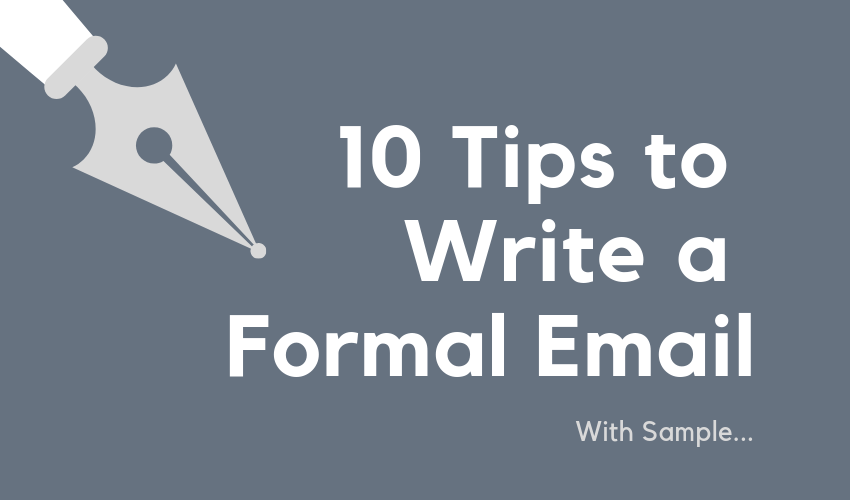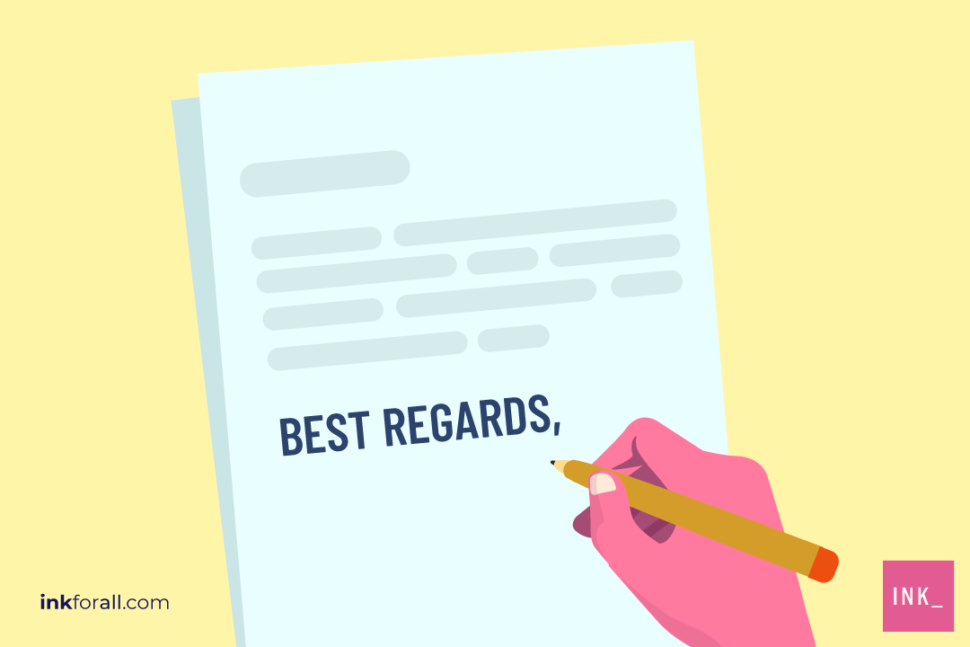There will be a lot of times in your work or student life when you will be needed to write a formal email. This has been a problem for many of us since we are not well aware of the difference between writing a standard regular email and a formal one. A formal email has a quite distinct structure and elements as it is in most cases directed to someone we don’t know very well.
Don’t worry because we have come up with 10 tips for writing a formal email along with a sample to help you comprehend everything better. So from the next time, your boss asks you to email your client or you decide to apply for a job board. Just keep these tips and mind and you will be all set to go.
What Is a Formal Email?
In simple words, a formal email is a message sent via Mail to a person you don’t know or to someone who holds some power or authority.
There are many daily life examples of writing a formal email. The most common is when you work at a place with a strict and formal atmosphere. It is very likely that the communication with your heads and seniors that take place through email is done in a very precise and formal manner.
Other examples include writing to your professor or other public corporations.
What distinct a formal email from a casual one is its structure and language. It is important for a formal email to follow a disciplined structure and language.
While casual emails may include abbreviations, slang, or other elements. It is highly advised to keep all the information organized while writing a formal email.
Here is a short example to help you understand
Formal Email:
An Extra Class for biology students has been arranged for 9th November, 10:00 am. Students are advised to report to the main campus on time
Casual Email:
Extra Class Update for biology students- Reporting time 10:00 am- punctuality needed
Writing a Formal Email
Before we dive deep into the tips, it must be noted that a formal email requires a lot more time and concentration in comparison with a casual email. You must be willing to invest time in order to yield better results.

1. Subject Line
- Subject Line:
We all have heard the wise saying that “first impression is the last impression”. The same is applied in the case of writing a formal email.
The reader most probably doesn’t know you well and the subject of your email is the very first thing that they will read and therefore it is recommended to not write a deviating or improper subject line or a lengthy one either.
Formal Email: Students Orientation Meeting: 9th November 7:30 am
Casual Email: Upcoming Orientation.
It can be clearly observed that the first example is a complete and short subject line whereas the second one is a mere hint of what is upcoming.
Avoid such subject lines in formal emails as there is a chance that your email would be left unread or completely ignored.
2. Salutation
The salutation refers to the sentence or the way in which you address the person you are writing to. It is regularly used in formal emails, but for casual emails, it is often skipped.
A salutation in a formal email may differ depending on whom you are sending the email to. If it’s for a group of people then it’s most effective to regard them as one rather than naming every Individual.
For example
- Dear staff members
- Dear Students
- Dear customers
If you are writing to a single person then it’s best to use their name along with their designated title.
- Dear Secretary Smith,
In the event that you are unaware of the name of the person you are writing to you may as well use their title all alone.
- Dear professor
3. Introduction
In most formal emails, the sender is required to introduce themselves. In contrast, the casual email which is usually written to someone you are familiar with can omit this detail.
The introduction should be well structured. Here is a short snippet for you.

My name is Mr/Mrs. X. I am a student of Health Sciences. This email is to inform you about the upcoming presentation.
4. Body
The body of a formal email normally elaborates the purpose of the email. The body consists of
This is where your main purpose of writing is disclosed. This part of the email contains the most information and thus it should be written vigilantly to prevent any miscommunication.
Be considerate about your use of words and sentence structure. You may as well have to go through it once or twice more.
Make sure you use a punctuation checker like Grammarlookup.com to improve your overall text.
5. Closing
This is where your email reaches its end. This is also quite vital since this is what your reader would read at the end. This may leave a lasting picture. You should make sure that you are leaving a good effect on the reader.

A good conclusion can also result in frequent and improved relations in the future.
Comparatively, it is often taken lightly in casual emails or even omitted at times.
The best way to end a formal email is by using “Sincerely”. Here is how:
Mr. Smith.
Professor of subject xxx
(Email)
(Phone number)
Now when we have taken you through the basic structure of a formal email. Let’s dig In some killer tips that would make it even better.
6. Be Precise
In a formal email, it is essential that you talk to the point and do not add any fluff in the email content.
If you are writing to your professor, do not write things such as ” As you know we are currently at chapter 9″. It’s ideal to state your point from the start to prevent disorientation in the communication.
7. Optimize Your Subject Line
It is very likely that the person whom you are writing to receive loads of emails on a regular basis. It’s normal for them. In order to make sure that yours is being considered. Make sure that your subject line is well optimized and to the point.
This is essential at times when you are contacting someone related to your business or for generating leads.
8. Use polite language and be to the point
There is nothing wrong with being lenient or polite in your writing language. You don’t necessarily have to be stern in order to make sure the required action is done on time.
The submission for your quarterly reports is due on Wednesday. It is requested that all employees Turn in their reports on time.
The example above displays well how sincerity and formality could be used at once. You may as well double-check your email before sending it to make this detail clear.
9. Edit & Proofread
Just as how it goes for any other writing. Make sure that you have read your email a couple of times, removed all the errors, and made your message clear before sending it.
Be considerate about punctuation and spelling errors. You may also make sure to add in the clear instructions (if any). Make sure you use a punctuation checker like Grammarlookup.com to improve your overall text.
10. The use of Emoticons in emails
We all love Emojis. It’s really tempting to not use the happy emoji every here and there to express your emotions in graphical form.
But it is not at all needed informal emails. They are much better without it. They make your email appear childish or unprofessional and are also disregarded by some authorities.
Word Count Matters.
Please be aware that no one has time to go through a thousand words email when the concern is to encounter a simple Query only. Be moderate in length. Don’t be too short nor go on with writing a whole long lengthened story.
It is best to keep up the length until your point of writing is clear.
Manners Cost Nothing
Just because you want something doesn’t mean that you have to be stern or rude. Use some kind words at the start and end such as Dear and Best wishes. Also, make sure that you are not getting out off track by using slang or informal clauses.
Find Your Voice.
It’s important that you have a uniform voice all-around your email. Keep the reader engaged. The best practice to do so is by proofreading your emails before sending them in.
Avoid Unnecessary Information.
Make sure that you are sending in a fluff-free email. Use bullets to state facts and highlight the areas you want to draw special attention to.
Don’t be blunt. Make a wise choice of words to be clear of what you want to convey. You don’t want to leave your reader clueless right?
Conclusion
It isn’t important that you should be an experienced writer to write a good formal email. The concern here is to do it right. It is not at all complicated once you are clear about its structure and elements. And now when you have gone through the whole article. Just get on typing a few samples and you will see the progress over time.
It was good.
IT HELPED A LOT.